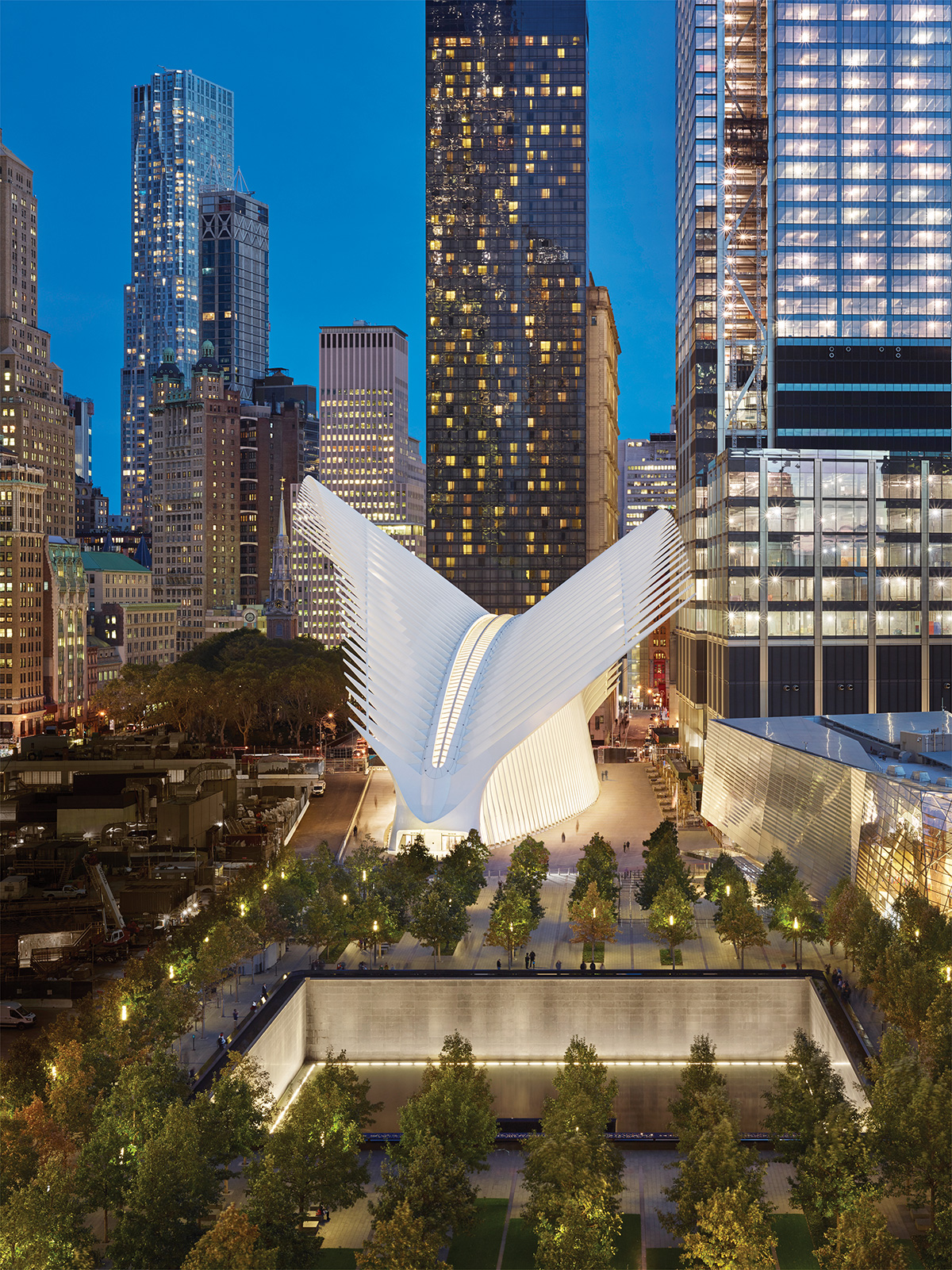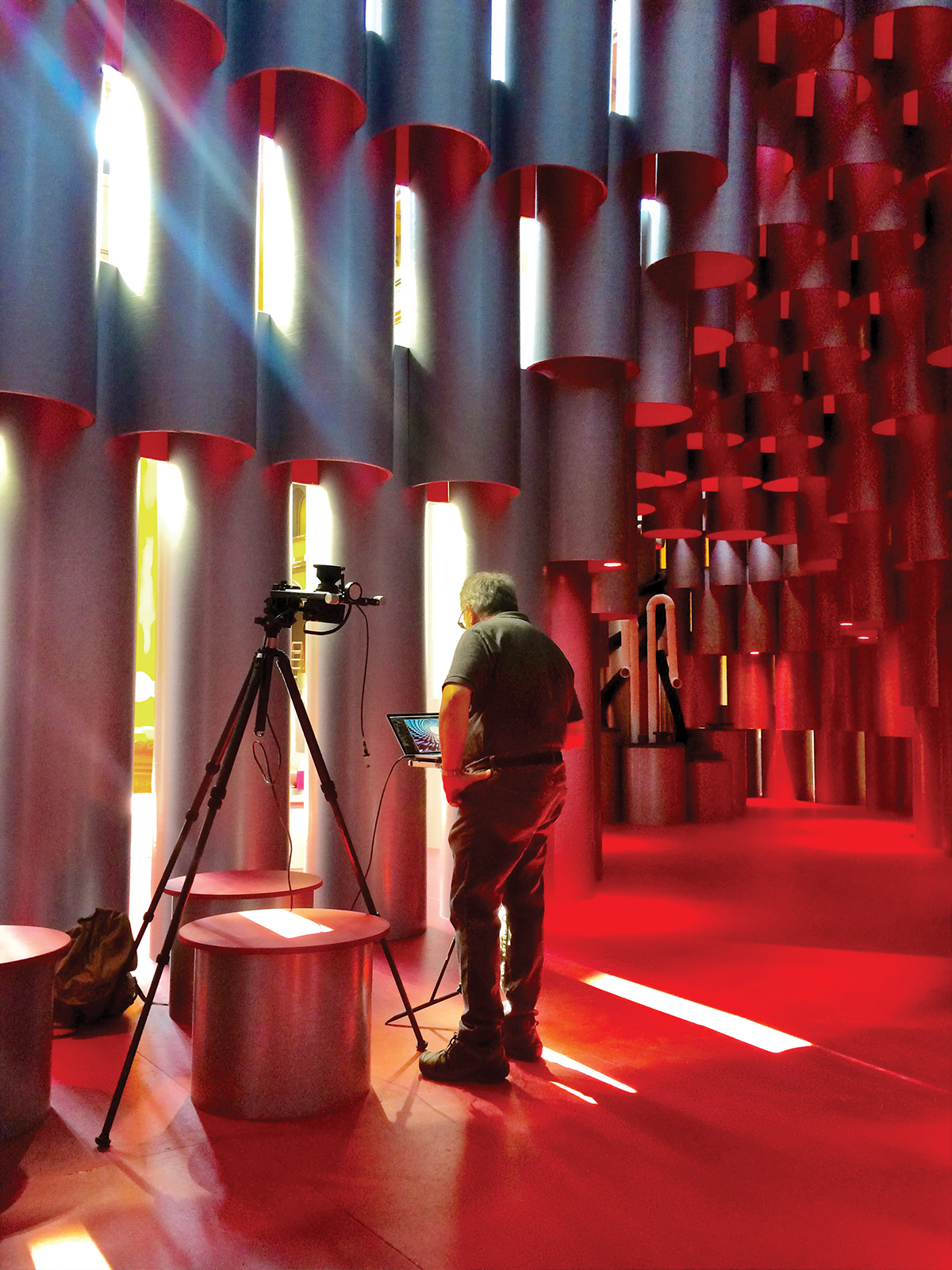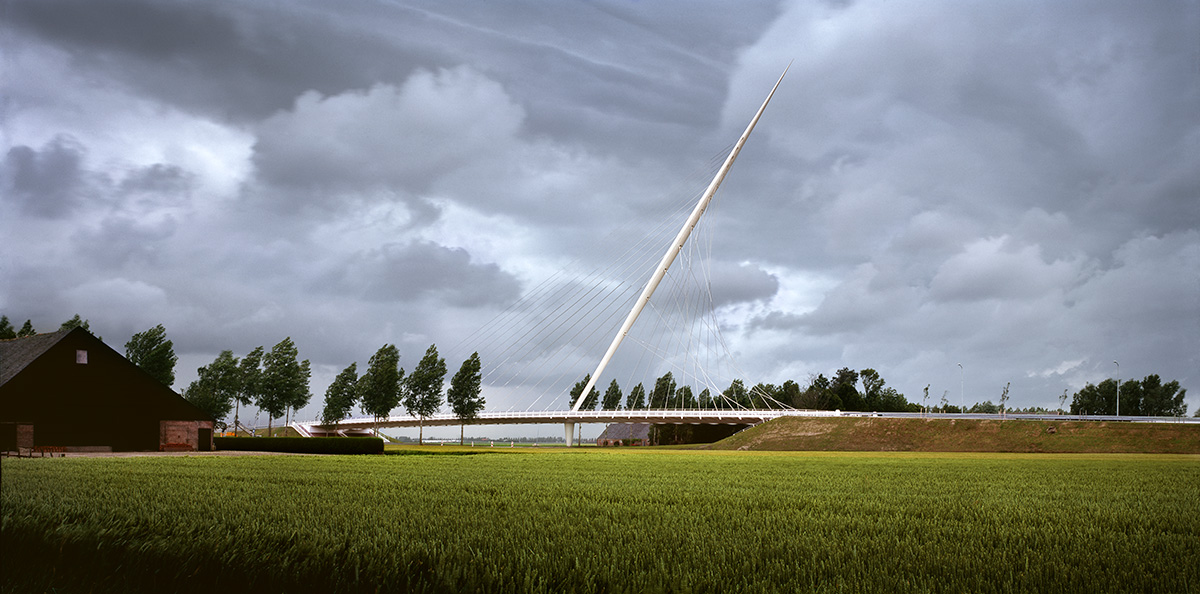For four decades, architectural photographer Alan Karchmer has produced award-winning images of the world’s most famous architectural works. The 67-year-old’s portfolio, which chronicles structures designed by such luminaries as Frank Gehry, Santiago Calatrava, Richard Meier, and Moshe Safdie, is tantamount to a crash course in modern architectural design.
Karchmer, who was recently honored with a yearlong retrospective of his life’s work currently on exhibition at the National Building Museum in Washington, D.C., stands apart from most of his peers by having an architecture degree. The Tulane University graduate admits, “I was interested in architecture but didn’t really know much about what I was getting into when I began my studies. However, when I got my hands on a Pentax Spotmatic 35mm SLR camera in my third year in college, I had what seemed like an epiphany. Photography came naturally, while I struggled with design. I came to realize that photographing architecture and interpreting it could be as much of an art as creating it.”

World Trade Center Transportation Hub (The Oculus), architect Santiago Calatrava


Before he graduated and returned home to Memphis, Karchmer landed a National Endowment for the Arts grant for a photography project that examined the history of architecture in his home town. “The local architects who saw my display became my first clients. I was off and running,” he remembers.
His architectural training helped him understand the needs of clients. It also taught him that architectural creations need to be made accessible to the public. “I understood that architects often see their work differently than do people who are not architects,” he says. “A large part of my job was to produce images that brought that extra perspective to the process and appealed to both the client and the public.”
After working for a couple of years in Memphis, he returned to New Orleans and eventually moved to Washington, D.C., where he worked for local and regional architectural clients. He smiles as he remembers what he now calls a turning point in his career: He received a commission from the world-famous Spanish architect Santiago Calatrava.
“I admired his work and really wanted to photograph it,” he says. “Aware that, as is often said, You are known for whom you shoot, I sought the assignment from Architectural Record magazine to photograph his first U.S. project, the Milwaukee Art Museum. Not long after the publication, I met Calatrava, and he told me, ‘You are the photographer who made my building fly!” referring to my multiple exposure image showing the kinetic brise soliel [sun shade] in motion.”

Alan Karchmer at work

Palau de les Arts Reina Sofia (Valencia Opera House), architect Santiago Calatrava
THE DANCE
Karchmer is well-known for his remarkable ability to capture the personality of a building. But it’s more than that. “There is something almost magical in all of Alan’s images,” says Boston-based architect and frequent client Warren Schwartz. “Let’s call it his special sauce. He knows how to enhance but not change a building. He’s like a great director who never shows his hand, who knows when to step in and when to step out of a project.”
Others agree. As Fast Company noted, “Karchmer’s gift is in translating complex buildings into accessible narratives that citizens outside of the architecture world can appreciate and understand.”
Says Karchmer, “I like to think I am creating something that closely emulates the experience of architecture. I try to bring the viewer into the image.”
That’s a challenge with two-dimensional images. “To accomplish that, I try to find and include things compositionally that begin to suggest time or movement,” he says. He may, for example, include foreground elements that create a depth of space and help viewers imagine themselves in the structure. “Otherwise, the composition may be too flat and uninviting,” he says. “I have an obligation to my clients to show their work in its best light.”
When it comes to composition, Karchmer is something of a perfectionist. “Composing a photograph is like a dance,” he explains. “I look for the ideal spot to place my camera, taking the perspective of the foreground and background into account. Then I look for the right lens to give me the angle of coverage I’m looking for. Then there’s more dancing, more framing and fine tuning.”
Says Warren Schwartz, who has accompanied Karchmer on shoots, “I am always amazed that while he has the vision—the eyes—of an architect, he knows how to tweak that enough to get something with real impact. Even on my projects he invariably sees things I didn’t see.”
Karchmer laughs as he confesses that in 2006, after 29 years of using a 4x5 view camera, he explored options to transition to digital capture and tested a DSLR. “The image quality was marginally acceptable, but the camera made the process just too easy.” He worried the camera would compromise the way he composed and made photographs: “With a view camera all the steps you go through to make a photograph slow down the process and encourage you to be more deliberate and give more consideration to the decisions you make.”
He dropped the DSLR system after a few weeks and was first in line to get the newly created Alpa XY medium-format technical camera, which he still uses, on a tripod, tethered to a laptop computer. In a nod to the past, he keeps the sun off the computer screen with the same black focusing hood he used decades ago with his vintage 4x5 Arca-Swiss view camera.

National Museum of African American History and Culture, architects Freelon/Adjaye/Bond/SmithGroup
LEVERAGING LUCK
Despite years of experience and his reputation as a careful, precise planner, Karchmer is quick to attribute plain old luck to much of his success. “Some might be surprised but Cartier-Bresson’s concept of ‘the decisive moment’ also applies to architectural photography,” he explains. “However, while there may be moments involving people, the moments that are decisive have more to do with light and weather and things that are happening in that respect. And luck plays a role.”
He remembers an assignment to photograph Santiago Calatrava’s bridges over the Hoofdvaart Canal in the Netherlands. “I’d spent three days photographing these bridges under sunny skies. Then, by chance, the weather changed, and I saw a storm coming. I was in just the right place, and the timing was right to capture the tip of the bridge’s mast against strong diagonal bands of illuminated clouds. I made the shot, and a moment later the scene had changed completely.”
While photographing another Calatrava project, Spain’s Valencia Opera House, he was busily setting up a dusk shot when his wife and photo stylist/collaborator, Sandra Benedum, rushed to him and said, “Come over here and look at this right now!” He remembers, “I only had time for one or two exposures and I went over a bit begrudgingly, only to discover the most incredible image of the moon framed perfectly by the opera house. It was such a great image that it was used as the cover of Calatrava’s next book. And it was basically my wife’s photograph. I was merely the camera operator!”
Robert Kiener is a writer in Vermont.


 View Gallery
View Gallery
